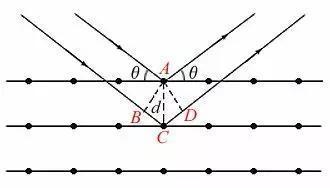

X-ray, also known as Qinlun-ray, is an electromagnetic wave with the wavelength in the range of 0.01-100 μm, which is between ultraviolet and γ-ray. Because X-ray has strong penetrability, thus, when X-ray irradiate into the crystal, it will be scattered by the atoms in the crystal. The scattered wave is scatted from the atomic center and formed the source spherical wave. Because the atoms are arranged periodically in the crystal, there is a fixed phase relationship between these scattered spherical waves. Therefore, it will cause some directions to reinforce and offset for each other, which is the diffraction phenomenon.
Utilizing X-ray diffraction technology, it can accurately determined and analyzed the crystal structure for various and new materials. In our X-ray diffraction equipment, it also can measure the micro-area and polycrystalline crystal structure.
1. Combined X-ray diffraction system.
2. vertical goniometer with optical encoder Technology.
3. new ultra-high speed two-dimensional silicon pixel detector.
4. multilayer mirror.
5. high precision film sample holder.
6. micro mapping test.
1. 2θ scanning range: ≥0°~160°, angle reproducibility: ≤ 0.0001
2. Pixel number of new ultra-high speed two-dimensional silicon pixel detector: ≥ 290000, effective area: ≥ 2900mm²
3. Purity of Kα/Kβ: ≥99.5%
4. Angle range of in-plane drive shaft: ≥ -3°~ 120°, scanning speed: ≥ -40° /min

Raman scattering spectroscopy is used to characterize the vibrational/rotational states of molecules and phonons in materials, to analyze the composition, phase transition, stress and acquire other crucial information of the material. The Raman signal can be regarded as the response of interactions between the incident light and various elementary excitation in the material, which is suitable for solids, liquids, powders and other forms. Thus it has a wide range of applications in the fields of physics, chemistry, biology and so on. In terms of basic research on condensed matter, it can directly study the optical scattering of electrons near the Fermi surface and investigate the carrier dynamic characteristics , such as probing possible electron-phonon coupling, calculating the intensity of electron-phonon coupling and obtaining the information of magnetic excitation.
It is used for rapid structural characterization of superconducting thin film materials and two-dimensional materials, optimizing the preparation conditions, and providing a screening basis for the synthesis of high-throughput materials.
1. Raman test range: 10 cm-1-4000 cm-1, fluorescence measurement range: 330 nm-1050 nm.
2. 800 mm ultra-long focal length spectrometer with 600gr/mm and 1800gr/mm reticles.
3. The instrument is equipped with two different wavelength lasers of 325nm and 532nm.
4. Ultra-low frequency accessory, capable of reducing the measurement range of Raman scattering signals to +/-10 cm-1.
5. Polarization accessory to study the vibration pattern and symmetry of the sample; Liquid nitrogen constant temperature device to achieve in situ testing of samples under temperature conditions of 84-300 K.


 EN
EN